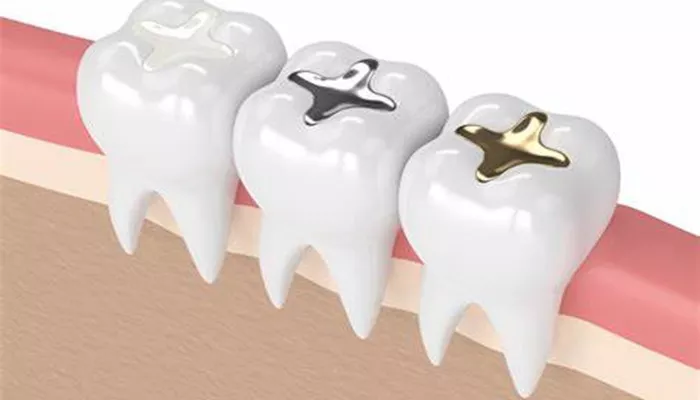Wisdom teeth extraction is a common dental procedure, often requiring sutures (stitches) to promote healing at the extraction site. Understanding how to identify whether these sutures have fallen off is crucial for ensuring proper recovery and preventing complications. This article will guide you through the signs that indicate your wisdom teeth sutures have come out, the types of sutures used, and what steps to take if you suspect they have fallen off.
The Importance of Sutures in Wisdom Teeth Extraction
When wisdom teeth are removed, the dentist typically closes the extraction site with sutures. These stitches serve several purposes:
Promote Healing: Sutures help keep the gum tissue together, allowing it to heal properly.
Prevent Infection: By closing the wound, sutures reduce the risk of bacteria entering the extraction site.
Support Tissue Regeneration: They provide structural support as new tissue forms.
Understanding how these sutures function can help you monitor your healing process effectively.
Types of Sutures Used After Wisdom Teeth Removal
There are generally two types of sutures used during wisdom teeth extractions:
Dissolvable Sutures:
These are designed to break down and be absorbed by the body over time, typically within 7 to 14 days.
Common materials include chromic gut or polyglycolic acid.
see also: When Does The Pain From Wisdom Teeth Stop?
They do not require removal, as they dissolve naturally.
Non-Dissolvable Sutures:
Made from materials like silk or nylon, these stitches must be manually removed by a dentist after a specified period (usually around 7 to 10 days).
Patients may experience discomfort if these stitches become loose or start to irritate surrounding tissues.
Signs That Your Wisdom Teeth Sutures Have Fallen Off
Identifying whether your wisdom teeth sutures have fallen off can be straightforward if you know what signs to look for.
Here are some common indicators:
1. Visual Inspection
The most apparent sign is observing whether the sutures are still present in your mouth. If you no longer see them when looking in a mirror, it could indicate they have fallen out or dissolved.
2. Lack of Sensation
After the initial numbness from anesthesia wears off, patients often feel the presence of sutures with their tongue or cheeks. If you no longer feel any stitches, this may suggest they have come out.
3. Shorter Stitch Length
If you notice that your stitches appear shorter than when they were first placed, this could mean they are dissolving or loosening.
4. Loose Stitches
Initially, sutures feel tight and secure; however, as healing progresses, they may become loose. If you notice that the knots seem less taut, this is a sign that they might be on the verge of falling out.
5. Pieces of Stitches in Your Mouth
Finding small pieces of thread while eating or rinsing your mouth is a clear indication that some portions of your sutures have detached and come out.
What to Do If You Suspect Your Sutures Have Fallen Off
If you suspect that your wisdom teeth sutures have fallen off, here are some steps you can take:
1. Assess the Situation
Check for any active bleeding at the extraction site.
Look for signs of infection such as increased swelling, redness, or discharge.
2. Maintain Oral Hygiene
Continue to practice good oral hygiene by gently rinsing your mouth with warm salt water. Avoid vigorous swishing that might disturb healing tissues.
3. Monitor for Complications
Be aware of symptoms that may indicate complications:
- Persistent pain or discomfort
- Fever
- Difficulty swallowing or breathing
- Excessive bleeding
If any of these symptoms occur, contact your dentist immediately.
4. Consult Your Dentist
If you’re unsure whether your sutures have fallen off or if you’re experiencing discomfort, it’s best to consult your dentist.
They can provide professional guidance and determine if any further action is necessary.
Healing Timeline After Wisdom Teeth Extraction
Understanding the typical healing timeline can help set expectations during recovery:
First Few Days: Initial swelling and discomfort are common; follow post-operative care instructions carefully.
1 Week Post-Extraction: Most patients will begin to notice reduced swelling and pain; dissolvable stitches may start to dissolve around this time.
2 Weeks Post-Extraction: Many dissolvable stitches will have fully dissolved; non-dissolvable stitches should be removed by a dentist if they haven’t already come out on their own.
1 Month Post-Extraction: The extraction site should show significant healing; however, complete healing of the gum tissue may take several months.
Common Concerns Related to Wisdom Teeth Stitches
Infection Risks
Infections can occur even with sutured wounds. Signs include:
Increased pain
Swelling that worsens over time
Pus or foul-smelling discharge
If any signs of infection develop, seek dental care promptly.
Dry Socket Formation
Dry socket is a painful condition that can occur when blood clots fail to form properly at the extraction site. Symptoms include:
- Severe pain radiating from the extraction site
- Visible bone in the socket
- Bad breath
If you suspect dry socket, contact your dentist for treatment options.
Conclusion
Knowing how to identify whether your wisdom teeth sutures have fallen off is essential for ensuring a smooth recovery process after extraction. By observing visual signs and sensations in your mouth and following proper post-operative care guidelines, you can effectively monitor your healing progress. Should any concerns arise during recovery—such as persistent pain or signs of infection—do not hesitate to reach out to your dentist for professional advice and assistance.
Related topics:

